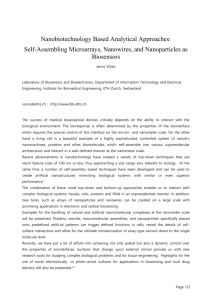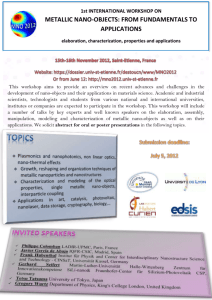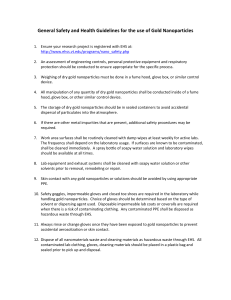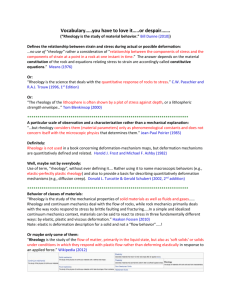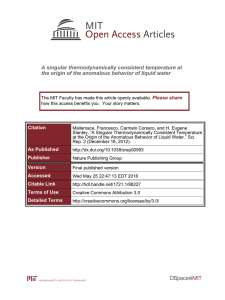Single Molecules and Metal Nanoparticles as Nanoscale
advertisement
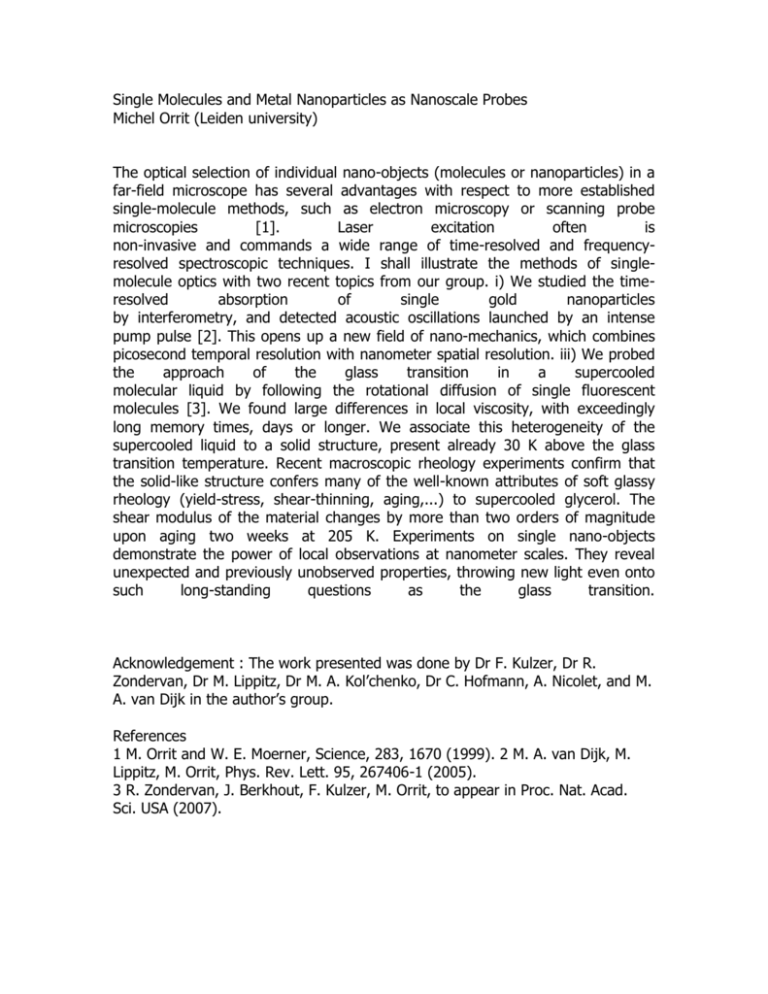
Single Molecules and Metal Nanoparticles as Nanoscale Probes Michel Orrit (Leiden university) The optical selection of individual nano-objects (molecules or nanoparticles) in a far-field microscope has several advantages with respect to more established single-molecule methods, such as electron microscopy or scanning probe microscopies [1]. Laser excitation often is non-invasive and commands a wide range of time-resolved and frequencyresolved spectroscopic techniques. I shall illustrate the methods of singlemolecule optics with two recent topics from our group. i) We studied the timeresolved absorption of single gold nanoparticles by interferometry, and detected acoustic oscillations launched by an intense pump pulse [2]. This opens up a new field of nano-mechanics, which combines picosecond temporal resolution with nanometer spatial resolution. iii) We probed the approach of the glass transition in a supercooled molecular liquid by following the rotational diffusion of single fluorescent molecules [3]. We found large differences in local viscosity, with exceedingly long memory times, days or longer. We associate this heterogeneity of the supercooled liquid to a solid structure, present already 30 K above the glass transition temperature. Recent macroscopic rheology experiments confirm that the solid-like structure confers many of the well-known attributes of soft glassy rheology (yield-stress, shear-thinning, aging,...) to supercooled glycerol. The shear modulus of the material changes by more than two orders of magnitude upon aging two weeks at 205 K. Experiments on single nano-objects demonstrate the power of local observations at nanometer scales. They reveal unexpected and previously unobserved properties, throwing new light even onto such long-standing questions as the glass transition. Acknowledgement : The work presented was done by Dr F. Kulzer, Dr R. Zondervan, Dr M. Lippitz, Dr M. A. Kol’chenko, Dr C. Hofmann, A. Nicolet, and M. A. van Dijk in the author’s group. References 1 M. Orrit and W. E. Moerner, Science, 283, 1670 (1999). 2 M. A. van Dijk, M. Lippitz, M. Orrit, Phys. Rev. Lett. 95, 267406-1 (2005). 3 R. Zondervan, J. Berkhout, F. Kulzer, M. Orrit, to appear in Proc. Nat. Acad. Sci. USA (2007).

